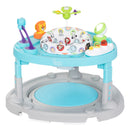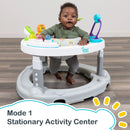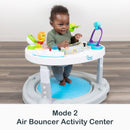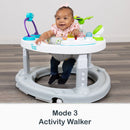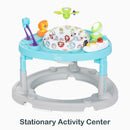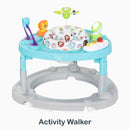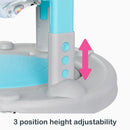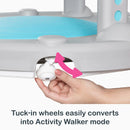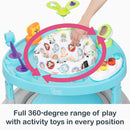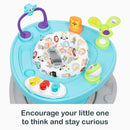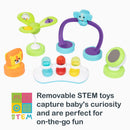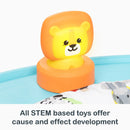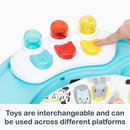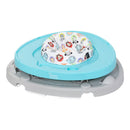Product Details
Download Product Instruction Manual
Instructional and How-To Videos
Features
- 3 modes of use:
- Stage 1 - Stationary Activity Center
- Stage 2 - Air Bouncer Activity Center
- Stage 3 - Activity Walker
- Activity Center offers a full 360-degree range of play with activity toys in every position.
- Removable domed air cushion offers bouncing to keep baby moving and entertained.
- All STEM based toys offer cause and effect development for baby, and can be removed to become standalone toys to take while on the go.
- Toys are interchangeable and can be used across different platforms for multiple playtime options.
- Tuck-In Wheels easily converts activity center into activity walker mode.
- Dual recline adjustments: Legs adjust to three height positions and seat bottom can adjust.
Description
Smart Steps® Bounce N’ Glide 3-in-1 Activity Center Walker combines learning time into playtime! With three modes of use ranging from stationary activity center, air bouncer activity center, and activity walker, your baby will have different playing options to keep them busy.
This activity center offers a full 360-degree range of play with STEM based toys in every position. STEM based toys focus on development and will encourage your little one to think and stay curious. When on the go, toys can be removed from the activity center and turned into standalone toys to keep your baby entertained! The innovative, removable domed air cushion allows child to bounce with ease, which will keep your little one active.
Recommended Use
- Younger infants between 4 to 6 months are right at the critical age to be considered safe while playing in a seated style activity center. Your child MUST ALREADY be able to hold their head upright and steadily unassisted before being placed in the activity center.
- The Stationary Activity Center is only for use by infants at least 4 months old and who can hold their head up unassisted.
- Discontinue use in any mode if child can climb out, begins to walk, reaches 30 lb in weight or 32" in height.
Technical Details
- Maximum weight recommendation: 30 lb
- Materials:
- 100% polyester fiber
- View law label
- Number of items: 1
- Batteries required: 2 AAA

















